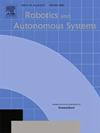软踝/膝关节外骨骼技术的最新进展:系统、驱动和控制
IF 4.3
2区 计算机科学
Q1 AUTOMATION & CONTROL SYSTEMS
引用次数: 0
摘要
外骨骼广泛用于康复目的和物理治疗应用。不断增加的老年人口和因某些疾病或事故需要帮助的人数对这种有效的可穿戴设备提出了更高的要求。研究人员越来越关注为人体特定区域开发外骨骼,从而使该设备价格合理且不那么复杂。近年来,在构建外骨骼方面,已经出现了向使用软材料的过渡。这是因为它具有卓越的灵活性、紧凑性、重量轻、可变性和与人体肌肉纤维平行工作的能力。本文的目的是对不同柔性智能材料在构建下肢外骨骼,特别是踝关节和膝关节中的适用性给出定性和定量的信息。本文讨论了软质材料的各种驱动方式及其独特的特性和性能,以及所采用的各种控制方法。耐久性、疲劳寿命、驱动力、位移实现、反馈延迟、易用性、人体工程学和成本等因素都会影响外骨骼的性能和功能。尽管软外骨骼已经有了很大的发展,但要实现商业规模,还需要进一步的改进。本文介绍了近年来开发的软踝/膝关节外骨骼的优点和局限性,并强调了提高其有效性的可能前景。本文章由计算机程序翻译,如有差异,请以英文原文为准。

Recent advancements in soft ankle/knee exoskeletons technologies: systems, actuation and control
Exoskeletons are widely used for both rehabilitation purposes and physiotherapy applications. The continuously increasing elderly population and the number of people needing assistance due to certain illnesses or accidents demand more of such effective wearable devices. Researchers are increasingly focusing on developing exoskeletons for specific areas of the human body consequently making the device affordable and less complex. Recent times have shown a transition towards the use of soft materials in constructing exoskeletons. This is because of its superior flexibility, compactness, lightweight, variability and ability to work in parallel to human muscle fibre. The objective of this paper is to give both qualitative and quantitative information on the suitability of different soft smart materials in constructing lower limb exoskeletons, especially, ankle and knee joints. The various actuation means using soft materials, their unique characteristics, performance, and the various control methods employed are discussed in this paper. Factors such as durability, fatigue life, actuation force, displacement achieved, feedback delays, ease of usage, ergonomics, and cost affect the performance and functionality of the exoskeleton. Even though there have been a lot of developments in soft exoskeletons, further improvements are still necessary for their implementation on a commercial scale. The merits and limitations seen with recently developed soft ankle/knee exoskeletons are presented and the possible prospects to improve their effectiveness are also highlighted in this paper.
求助全文
通过发布文献求助,成功后即可免费获取论文全文。
去求助
来源期刊

Robotics and Autonomous Systems
工程技术-机器人学
CiteScore
9.00
自引率
7.00%
发文量
164
审稿时长
4.5 months
期刊介绍:
Robotics and Autonomous Systems will carry articles describing fundamental developments in the field of robotics, with special emphasis on autonomous systems. An important goal of this journal is to extend the state of the art in both symbolic and sensory based robot control and learning in the context of autonomous systems.
Robotics and Autonomous Systems will carry articles on the theoretical, computational and experimental aspects of autonomous systems, or modules of such systems.
 求助内容:
求助内容: 应助结果提醒方式:
应助结果提醒方式:


